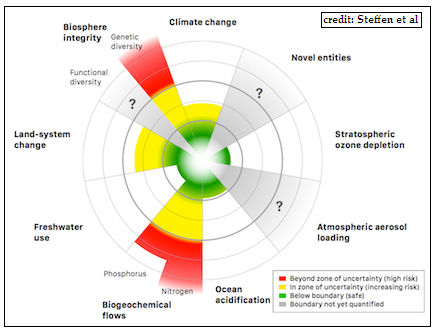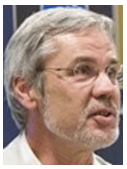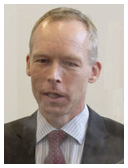The climate crisis has been found to have inched measurably forward, says S.Ananthanarayanan.
Of nine factors that contribute to environmental degradation, identified by an international team of scientists working with the Stockholm Resilience Centre, three were found to have passed the limit of the earth’s capacity to compensate. In an article in the journal, Science, a group of eighteen scientists have added one more to the list, calling on the world to act decisively before the earth tips over so far that we are not able to adapt.
World Governments got together in 1992, twenty three years ago, to think of what to do about global warming. The meet of 1992 registered concern, and the Kyoto conference of 1995 planned a course of action - in the form of limiting CO2 emissions by developed nations, at least and from 2007 to 2012. But even this has been found to be flawed, with countries like China and India manufacturing for themselves and others and environmental damage has continued.
While the warning about climate change had been first sounded by environmental scientists, spurring governmental agencies to move towards containing CO2 emissions, in the first instance, the Stockholm group went further, to identify the different factors that needed to be controlled, the so called nine planetary boundaries, for the earth not to slide into a different balance of climate and resources, in which human populations may find it difficult to manage. The Stockholm Centre studies the resilience, or the capacity of socio-ecological systems to remain stable in the face of disturbances to ecological factors like climate, land use, pollution of air or water sources, or even human behavior and exploitation of nature. While the internationally adopted objectives of the CO2 cap and now to contain temperature rise to 2°C were fair enough, the Resilience Centre named another eight environmental factors which also needed to be controlled. These were biodiversity, depletion of the ozone layer, ocean acidification, pollution by phosphorus and active nitrogen, reduction of forest cover, depletion of fresh water sources, atmospheric aerosol and then the host of other entities that humans introduce. The centre used computer simulation devised at the Potsdam Institute of Climate Impact Research and arrived at a set of just how far damage to these nine parameters could go before the balance would be irreversibly changed.

New study
While the findings first published in 2009 said three of the nine boundaries - climate change, loss of biodiversity and phosphorus-nitrogen pollution - had been breached, a refined and updated study just released finds that one more limit, of land use, has been exceeded. “Transgressing a boundary increases the risk that human activities could inadvertently drive the Earth System into a much less hospitable state, damaging efforts to reduce poverty and leading to a deterioration of human well-being in many parts of the world, including wealthy countries,” says Prof Will Steffen of the Australian National University and lead author of the Science paper.

The new study makes use of a large number of assessments and research since 2009 and provides updated analyses and quantification of many of the parameters studied. The study finds that even where some of the boundaries, like freshwater use, have not been crossed at the planetary level, tolerances at the regional level have been exceeded. The study also notes that boundaries are closely interlinked, leading to control of one resulting in overshooting another. ”If irrigation was reduced to stay below the boundary for freshwater use, cropland may have to be expanded as a compensation measure, leading to further transgression of the boundary for land-system change,” says co-author Dieter Gerten, of the Potsdam Institute. “Implementing methods to use water more efficiently in agriculture can help sort out this dilemma and at the same time increase global food production,” Gerten explains.

In respect of rising CO2 levels, the current level is 399 parts per million, against the limit that was taken as 350 to 450. But Johan Rockström, director of the Stockholm centre said the CO2 level should not cross 350 ppm, which corresponds to a temperature rise of 1.5°C. The target of 2°C, now being pursued, should hence be the absolute outside limit. “Our analysis suggests that, even if successful, reaching this target contains significant risks for societies everywhere,” said Rockström.

Value of the study
The content of the study is to be presented by Rockström before the World Economic Forum at Davos on 21-24th Jan. “In the last four years we have worked closely with policymakers, industry and organisations …. to explore how the planetary boundaries approach can be used as a framework for sectors of societies to reduce risk while developing sustainably,” says Rockström. “The world has a tremendous opportunity this year to address global risks, and do it more equitably. In September, nations will agree on the UN’s Sustainable Development Goals. With the right ambition, this could create the conditions for long-term human prosperity within planetary boundaries,” Rockström says.
But, as lead author Steffen has said, not to do so would be at the cost of ‘even wealthy countries’. The greatest costs would be to the poorer ones, in Asia and Africa. Can these countries afford to ignore reality and pursue ‘development’ to match other parts of the world? Or can the developed nations delay equal access to resources to the rest of the globe?
Planetary boundaries is the way to go forward
“I think one of the most important points is that this is not a doomsday message – quite the opposite actually”, says Dr Katherine Richardson, from the Centre for Macroecology, Evolution and Climate, University of Copenhagen, and co-author, in a communication.

“We knew already that we had environmental challenges with respect to all 9 of these boundaries but we have no mechanism to judge “how much is too much”. The planetary boundaries framework gives us a tool to work with to identify a “safe operating space” for societal development. You can think of it like a bank statement. It tells you how much money you have. You can use that money any way you want but you cannot use it more than once and you cannot borrow more unless you can pay it back later! Here, we are proposing a mechanism that helps us understand how much we can affect the Earth system without greatly increasing the risk of dramatically changing our own living conditions (for the worse in terms of human living conditions). Such a “bank statement” tool will be necessary when implementing the UN Sustainability Development Goals (coming in 2015) and this represents a new way that science can support societal development.”

------------------------------------------------------------------------------------------